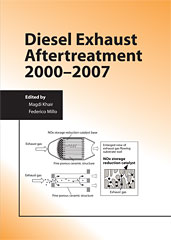Technical Paper
Pre-Design and Feasibility Analysis of a Magneto-Rheological Braking System for Electric Vehicles
2023-04-11
2023-01-0888
Magneto-Rheological (MR) Fluid started to be used for industrial applications in the last 20 years, and, from that moment on, innovative uses have been evaluated for different applications to exploit its characteristic of changing yield stress as a function of the magnetic field applied. Because of the complexity of the behavior of the MR fluid, it is necessary to perform lots of simulations, combining multi-physical software capable of evaluating all the material’s characteristics. The paper proposes a strategy capable of quickly verifying the feasibility of an innovative MR system, considering a sufficient accuracy of the approximation, able to easily verify the principal criticalities of the innovative applications concerning the MR fluid main electromagnetic and fluid-dynamic capabilities.


